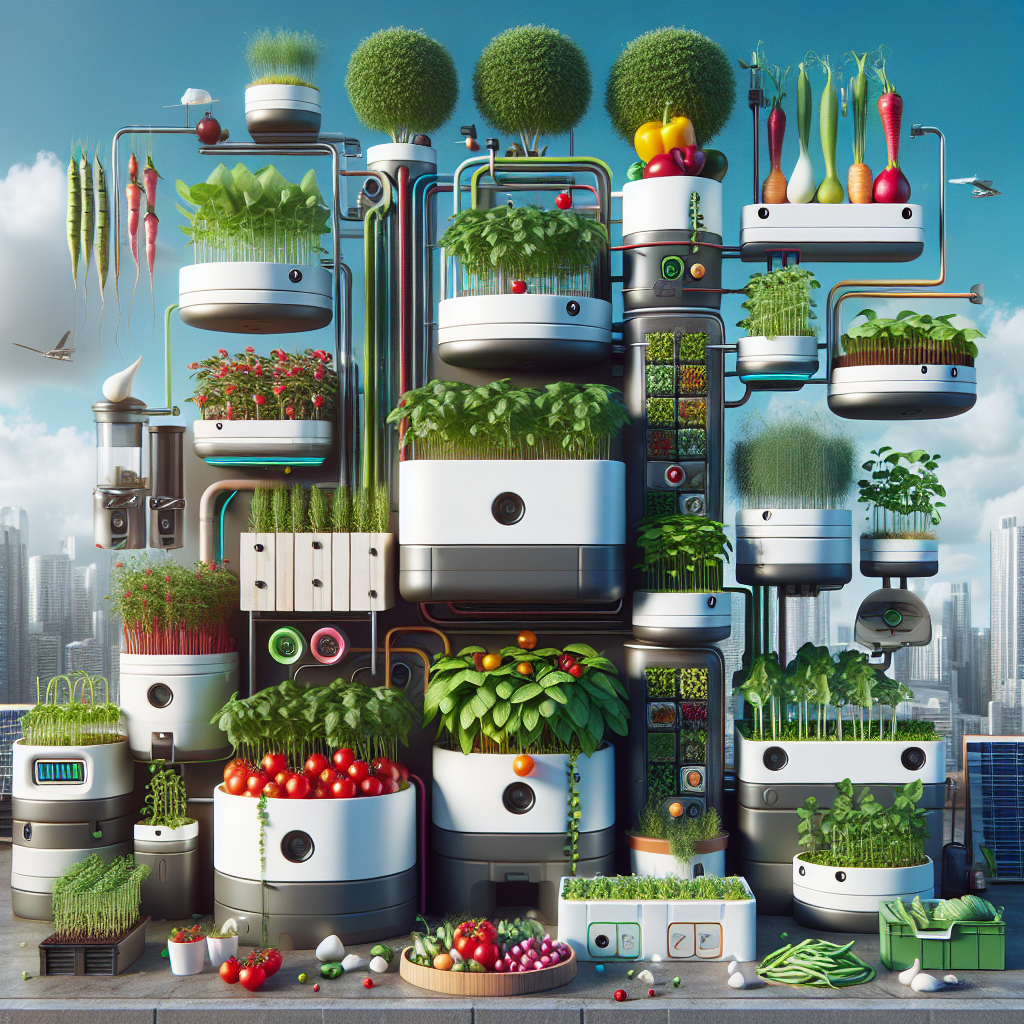Overview of Container Vegetable Gardening
Definition and Purpose
Container vegetable gardening is the practice of growing vegetables in containers instead of planting them directly into the ground. This method serves as an efficient alternative for gardeners with limited outdoor space or unsuitable soil conditions. It allows cultivation on patios, balconies, and even indoors under controlled conditions.
Benefits and Advantages
This form of horticulture presents multiple benefits, such as the ability to control soil quality and reduce weed complications. It significantly mitigates the risk of soil-borne diseases and provides flexibility in managing light exposure and temperature for vegetables. As Julie Thompson-Adolf, author of 'Starting & Saving Seeds,' states, "Container gardening is perfect for those desiring fresh produce but lack the conventional garden space."
Suitable Containers and Soil Requirements
Containers used for vegetable gardening should be spacious enough to accommodate root growth and have adequate drainage holes to prevent waterlogging. Nonporous materials help to conserve water, while porous ones provide better aeration. The soil used in containers needs to be fertile, well-draining, and light enough to encourage root health.
Choosing the Right Vegetables for Container Gardening
Types of Vegetables That Thrive in Containers
Vegetables with compact growth habits such as lettuce, peppers, and tomatoes are well-suited. Root crops like carrots and radishes also perform admirably in deep containers.
Factors to Consider When Selecting Vegetables
Consider maturity time, plant size, and climatic needs. Dr. John Smith, Horticulturalist, elaborates, "Container vegetable gardening offers the opportunity to grow a variety of vegetables in limited space, including high-value crops like herbs and heirloom tomatoes."
Container Selection and Preparation
Selecting the Right Containers
Choose containers based on size, depth, and compatibility with chosen vegetables. Ensure that the size is proportional to the plant to prevent stunted growth.
Best Materials for Containers
Materials like clay, plastic, and fabric each have unique characteristics affecting soil temperature and moisture retention. Plastic is lightweight and retains moisture well, while clay is porous, facilitating soil aeration.
Preparing Containers for Planting
Cleanliness is crucial to prevent disease transmission. Include a layer of gravel at the bottom to enhance drainage, followed by the soil mix.
Soil Mix and Fertilizer for Container Vegetables
Importance of Well-draining and Nutrient-rich Soil
Soil quality remains paramount as it determines water retention and nutrient provision. It should be fortified with organic matter to improve fertility and structure.
Creating the Ideal Soil Mix
Combine peat, compost, and perlite or vermiculite to create a balanced mix. Maintain a neutral pH and consider adding a slow-release fertilizer for extended nutrient supply.
Applying Fertilizers to Optimize Growth
Fertilization compensates for nutrients not present in potting mixes. Apply complete, balanced fertilizers or organic options like fish emulsion, carefully following recommended application rates.
Planting Techniques for Container Vegetables
Starting from Seeds or Seedlings
Both methods are valid; seeds are cost-effective, while seedlings offer a head start. Dr. Sarah Green, Agronomist, advises, "Provide enough space for each vegetable to grow and avoid overcrowding in containers."
Planting Depths and Spacing Guidelines
Adhere to depth guidelines specific to each vegetable type. Ensure adequate spacing according to the plant's mature size for unfettered growth.
Watering and Irrigation Strategies
Understanding Watering Needs for Container Vegetables
Container plants may require more frequent watering due to limited soil volume. Monitor soil moisture regularly to avoid under or over-watering.
Proper Watering Techniques and Frequency
Water plants until excess drains from the bottom, signaling sufficient soil saturation. During hotter periods, more frequent watering may be necessary.
Effective Irrigation Systems for Containers
Drip irrigation systems ensure a steady, regulated water supply. Self-watering containers can also be beneficial in maintaining consistent moisture levels.
Container Placement and Sunlight Requirements
Ideal Locations for Container Vegetable Gardening
Find spots that provide ample sunlight while offering protection from extreme elements such as strong winds or heavy rain.
Maximizing Sunlight Exposure for Optimal Growth
Vegetables typically need about 6-8 hours of sunlight. Master Gardener Jennifer Lee emphasizes, "Ensure containers are placed in areas that receive at least 6-8 hours of direct sunlight daily."
Pest and Disease Management in Container Gardening
Common Pests and Diseases in Container Vegetables
Aphids, spider mites, and fungal infections are common concerns. Vigilance in monitoring plant health is essential for early detection and treatment.
Preventative Measures and Organic Pest Control Methods
Utilize neem oil, insecticidal soaps, and encourage beneficial insects as part of integrated pest management. Dr. Mark Johnson, Entomologist, remarks, "Regular inspection and timely intervention are key to preventing pest and disease outbreaks in container gardening."
Harvesting and Maintenance of Container Vegetables
Signs of Ripeness and Harvesting Techniques
Look for color changes, size, and firmness as indicators of ripeness. Harvesting at peak maturity ensures the best flavor and nutritional content.
Pruning, Trimming, and Staking for Plant Maintenance
Certain vegetables benefit from pruning to encourage productivity. Support structures may be necessary for vining or tall-growing plants.
Tips for Prolonged Yield and Continuous Harvests
Successive planting and picking vegetables regularly can extend the productive life of plants.
Case Study: Successful Container Vegetable Gardens
Real-life examples of thriving container vegetable gardens
Detailed accounts of successful urban and suburban container gardens illustrate the application of the discussed principles.
Key factors contributing to their success
Consistent care, selection of appropriate varieties, and proactive pest management are among the decisive factors.
Lessons to be learned from these case studies
These practical insights can inform novice and experienced gardeners alike, providing a blueprint for success in their container gardening endeavors.
Conclusion and Call to Action
To conclude, container vegetable gardening is a versatile and rewarding practice suitable for a range of environments. The knowledge imparted here, complemented with insights from industry experts, offers a robust framework for success. As the demand for sustainable and local food sources grows, so does the significance of container vegetable gardening. Readers are encouraged to apply these practices and join the discourse, advancing innovation and expertise in the field.
Topics




